|
|
|
Sort Order |
|
|
|
Items / Page
|
|
|
|
|
|
|
| Srl | Item |
| 1 |
ID:
121991
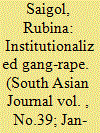

|
|
|
| 2 |
ID:
132309
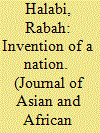

|
|
|
|
|
| Publication |
2014.
|
| Summary/Abstract |
Ethnic and national identities are shaped and evolve in the context of complex negotiations sustained among multiple players, each with its own and often contradicting interests. This study focuses on one unique cultural group, the Druze in Israel, and examines a multifaceted identity constructed as a direct result of policies and expectations of members and institutions of majority groups. My aim is to explore how this identity is defined within the complex intergroup context, the various components and their inter-relations (congruent or conflictual), and the way its boundaries are shaped through interaction with other identities in Israel. The analysis of the interviews conducted with 50 Druze university students in Israel yielded three major content categories: 'Druze by blood;' 'Arab, but less so;' and 'Being Israeli.' The Druze identity is constructed in primordialist terms, and a central role is assigned to the belief in reincarnation. The Arab identity is categorized primarily as a national one, and it is strongly affected by the negative attitude of Arabs toward the service of the Druze in the Israeli army. Three major aspects emerged in relation to the Israeli identity of the Druze: the fact of their being citizens of the State of Israel, the attitude of the state and of Jews toward them, and the army service. Our study portrays a highly complex and problematic constellation of group identities, shaped as a delicate adaptation to the unique position of a group subject to multiple political forces in the past and present.
|
|
|
|
|
|
|
|
|
|
|
|
|
|
|
|
| 3 |
ID:
085886
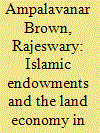

|
|
|
|
|
| Publication |
2008.
|
| Summary/Abstract |
This paper emphasizes the deeply embedded economic interests of Islamic charities: the accumulation of land and property, commercial and financial activities, rather than their role in providing social welfare, educational opportunities, and facilities for individuals to perform the Hajj. These entrepreneurial priorities are global, since the waqf (Islamic endowment) is linked to the homeland of the founders in the Hadhramaut and to Saudi Arabia. The paper appraises the application and success of Islamic finance in the commercial exploitation of these assets. The focus then shifts to the role of shari'a law in determining and shaping the issuance of bonds and derivatives. Throughout the paper, attention is given to the nature of an 'ethical capitalism' that emerges, and a brief comparison is drawn with the Chinese or Confucianist Tong (lineage).
|
|
|
|
|
|
|
|
|
|
|
|
|
|
|
|
| 4 |
ID:
122000
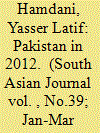

|
|
|
| 5 |
ID:
134223
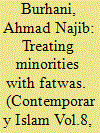

|
|
|
|
|
| Publication |
2014.
|
| Summary/Abstract |
The term "minority religious community" in the Muslim country of Indonesia refers not only to those embracing religions other than Islam, but also to minority groups like the Ahmadiyya. Recently, the treatment of Ahmadis has been worse than the treatment of non-Muslims. This article, therefore, intends to study the status of 'deviant' groups under Islamic law and the treatment of them in Muslim society. Specifically, this article addresses the following questions: How did ulama in the past define and treat minority groups? How do contemporary Sunni ulama define and treat the Ahmadiyya? What is the status of this group under Islamic law? Are they apostates, heretics, or unbelievers? And what are the legal consequences of these charges? To answer these questions, this article employs two methods. First, for theoretical treatment of minority groups in the past, this article focuses its analysis on al-Ghaz?li's Fay?al al-tafriqa and Fa??'i? al-b??iniyya. Second, following a discussion of classical Islam, the article moves to contemporary time by analyzing fatwas against the Ahmadiyya from five institutions: the R?bi?a al-'?lam al-Isl?m?, Majelis Ulama Indonesia (MUI), Muhammadiyah, Council of the Islamic Fiqh Academy of the Organization of Islamic Cooperation (OIC), and Nahdlatul Ulama (NU). This article argues that, first, fatwas against the Ahmadiyya issued by these institutions were intended as a device to sustain orthodoxy of umma and, second, orthopraxy or devoutness in observing religious rituals, as practiced by the Ahmadis, does not exempt them from the charge of apostasy because theologically they are believed to deviate from orthodox beliefs.
|
|
|
|
|
|
|
|
|
|
|
|
|
|
|
|
|
|
|
|
|